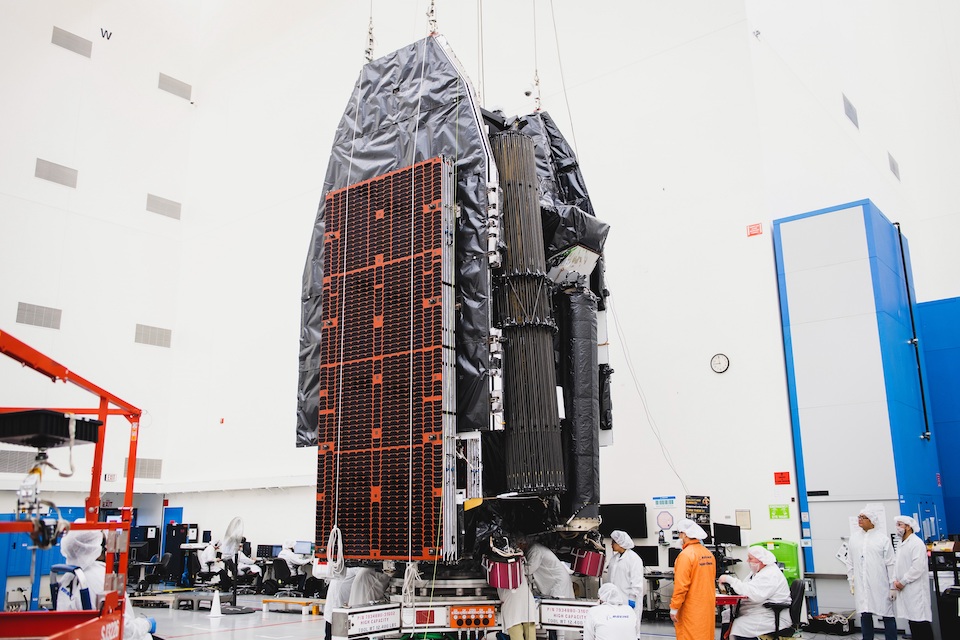Latest News

The ViaSat-3 Americas satellite in the Boeing El Segundo, California satellite factory. Photo: Boeing
Boeing delivered the first ViaSat-3 satellite to Viasat ahead of its upcoming launch, the company announced Monday. The satellite, a 702MP+ model, is the most powerful the manufacturer has ever built.
The satellite was flown from Boeing’s factory in Florida to Cape Canaveral, Florida, where Boeing and Viasat teams will support launch and mission operations. It is set to launch the week of April 8 on a SpaceX Falcon Heavy mission, Viasat announced last month.
The satellite is based on the 702 vehicle design that is used for the U.S. Department of Defense’s Wideband Global Satellite (WGS) constellation. But the 702MP+ features all-electric propulsion for the first time aboard a 702MP, which Boeing said offers more sustained thrust and efficiency. Boeing also improved the platform’s structure to support Viasat’s large payload. The platform also accommodates the largest commercial satellite solar arrays Boeing-subsidiary Spectrolab has ever produced.
Boeing designed and manufactured the platform and worked with Viasat to integrate the Viasat-built payload.
“We designed, built and delivered the most powerful satellite platform we have ever provided to a customer. The result really is an engineering marvel,” said Michelle Parker, vice president of Space Mission Systems at Boeing Defense, Space & Security. “We expanded the boundaries of our design and the platform components to exceed Viasat’s demanding mission requirements, while ensuring alignment with Boeing’s proven qualification and reliability standards.”
The satellite has faced repeated delays, and Viasat recently cited “technical, manufacturing and unprecedented pandemic challenges” for both payload development and on the manufacturing side.
This is the first in the Viasat-3 constellation, and it will cover the Americas. The next satellite in the ViaSat-3 constellation, which will serve EMEA, Europe, Middle East, and Africa, is planned for launch by ULA in September.
“Working with Boeing, we’re very excited to complete the ViaSat-3 Americas and bring us one step closer to providing higher speeds, more bandwidth, and greater value to our customers on a global scale whether they be on land, on the sea, or in the air,” said Dave Ryan, president Space & Commercial Networks for Viasat. “The innovation of this satellite allows us new levels of flexibility to dynamically allocate capacity to the most attractive and engaged geographic markets.”
Get the latest Via Satellite news!
Subscribe Now